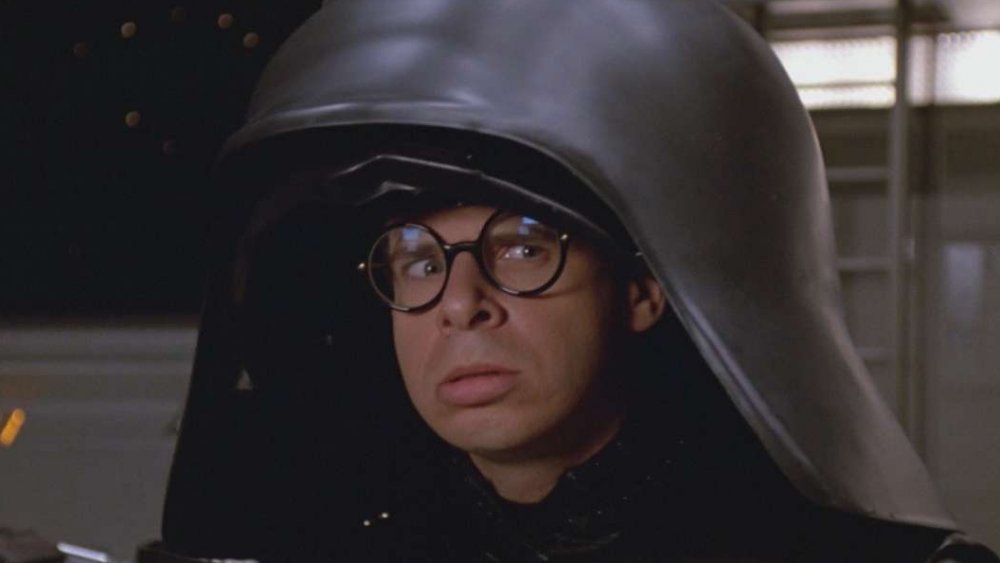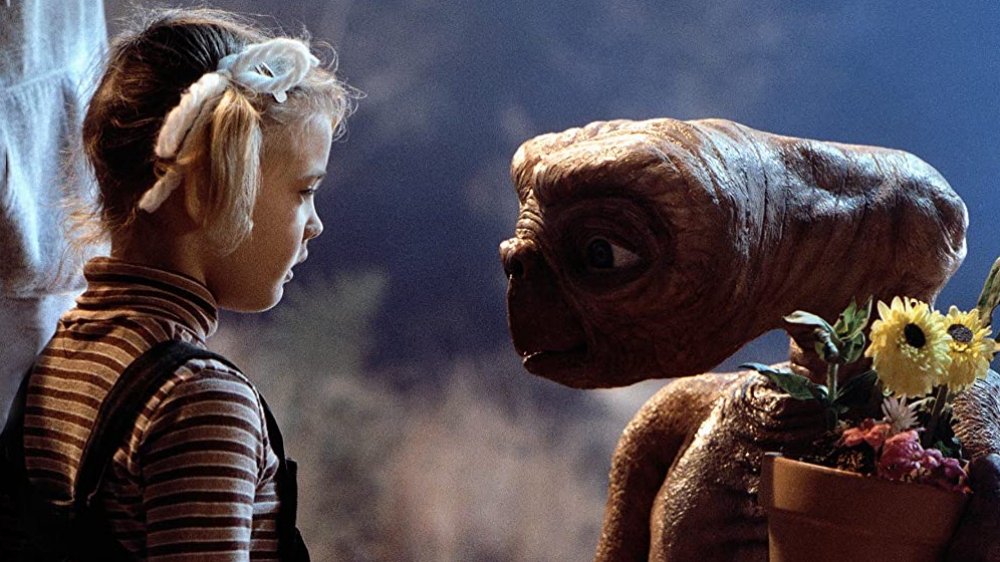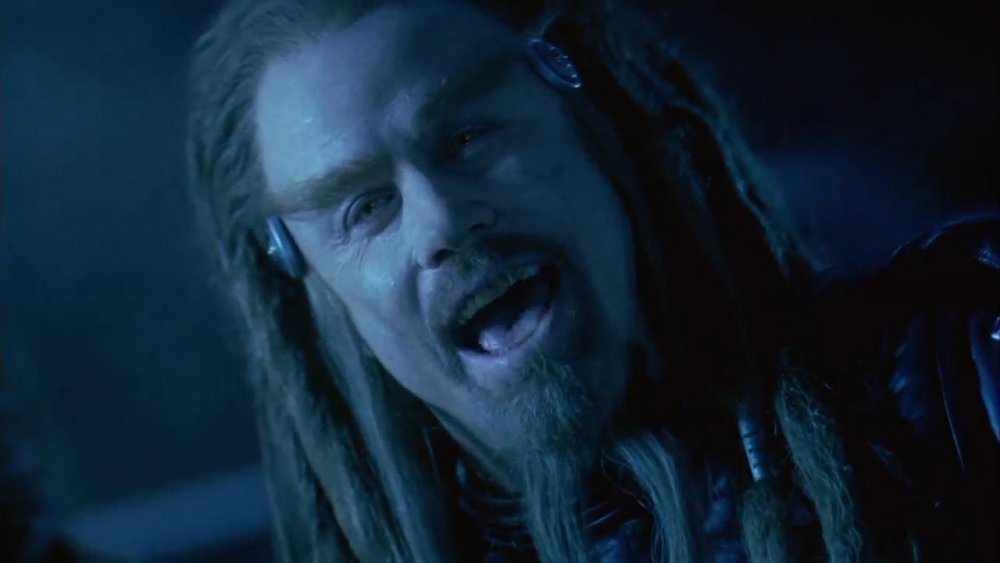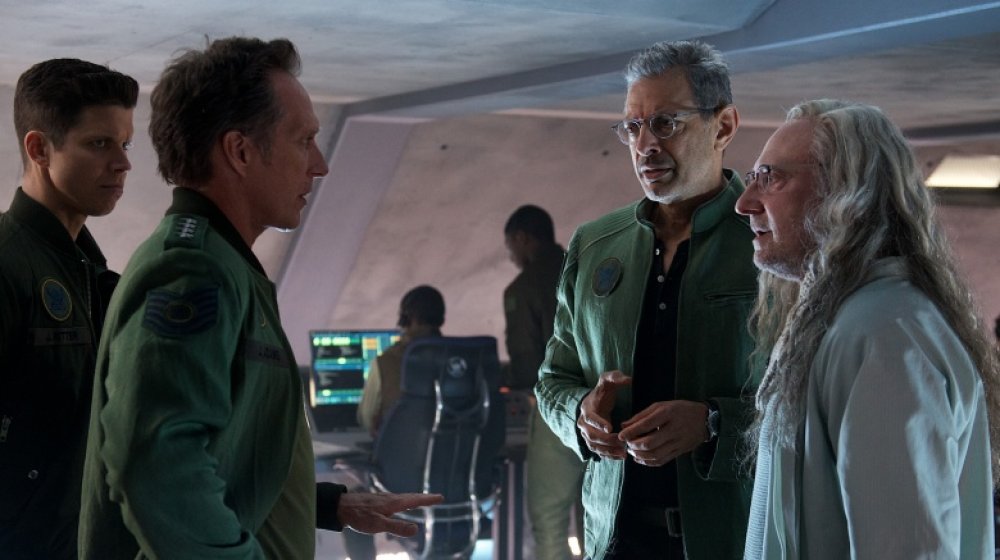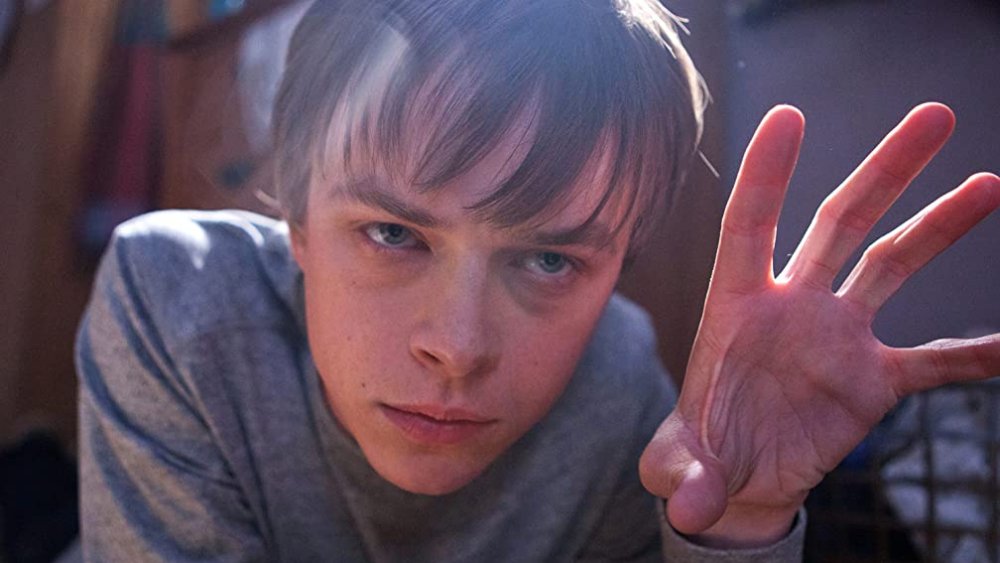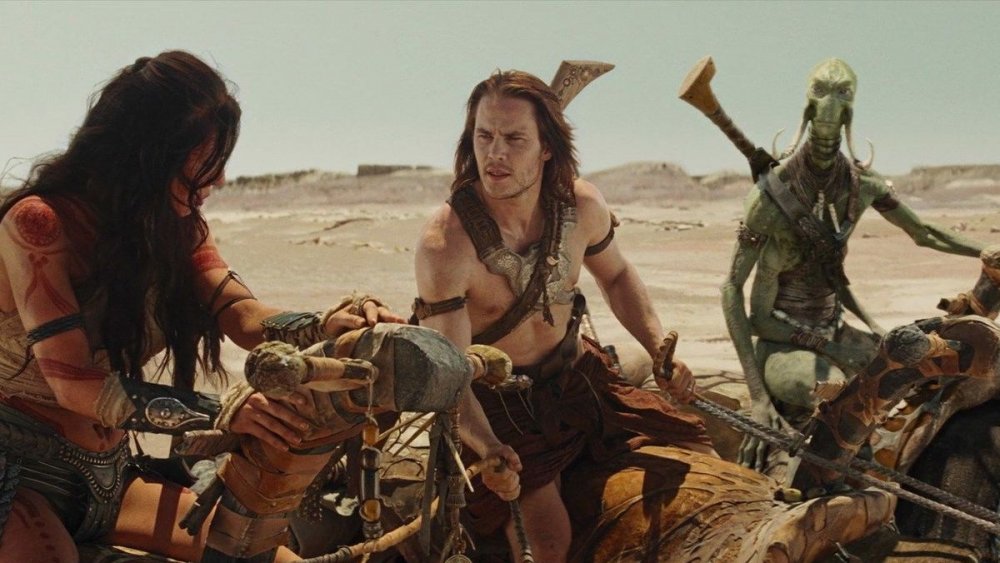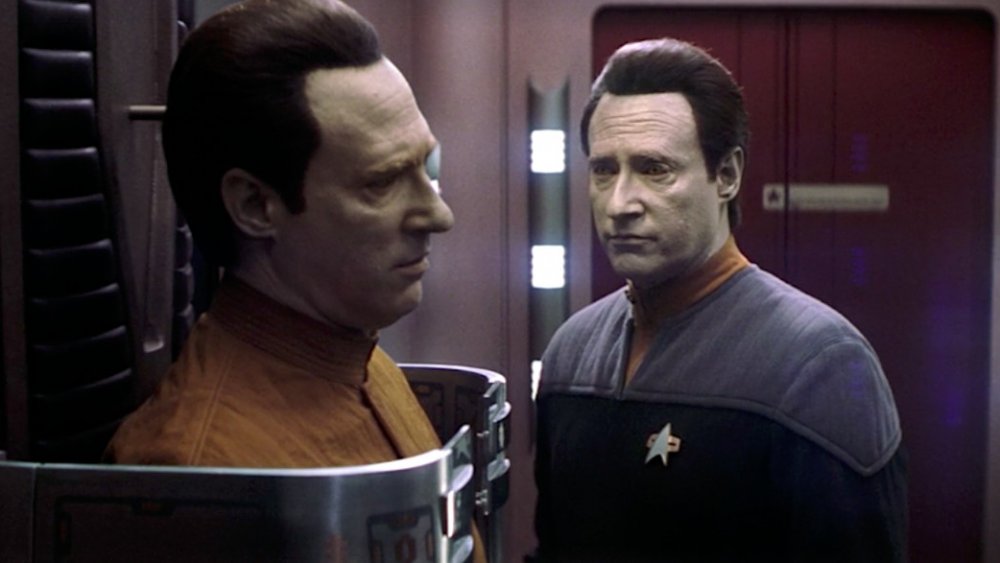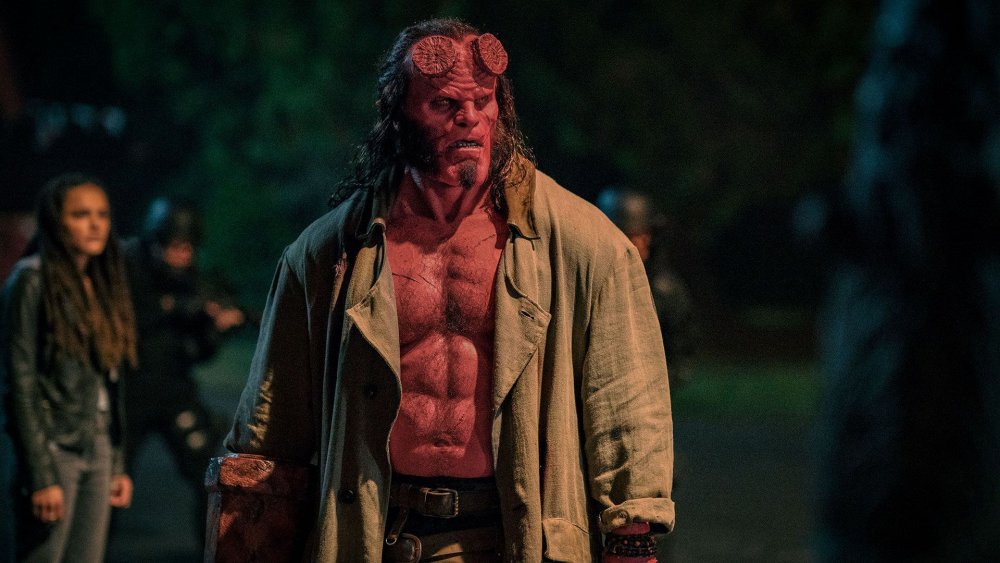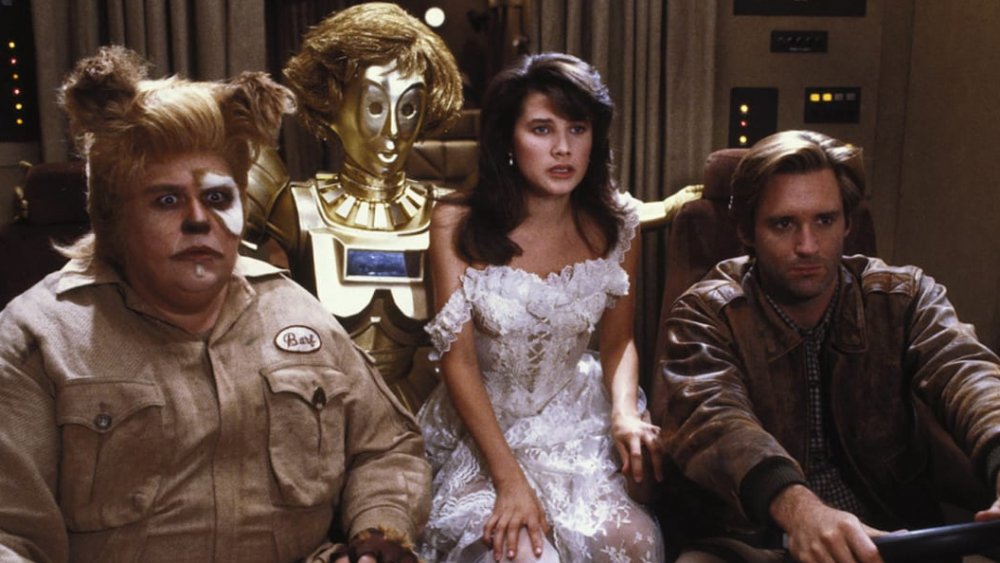The Real Reason These Sci-Fi Movies Never Got Sequels
Hollywood movie studios don't really like to take chances. If they're going to invest tens or even hundreds of millions of dollars in a movie, they want to be as sure as possible that the thing is going to be a wildly popular blockbuster success. So, executives hedge their bets by making movies based on well-known properties, and that's why sequels are so popular, especially sequels to popular science fiction films.
After all, a good chunk of the marketing is built in for a sci-fi sequel, and a follow-up gives fans what they want — the same characters as before having a similar or further adventure — while also satisfying studio executives. After all, a sequel to a popular movie is a known entity that they can count on.
But once in a while, the sequels that are forgone conclusions wind up in production purgatory or never get made at all. Sure, maybe they were supposed to be the next installment in an immensely successful sci-fi franchise, but for one reason or another, they never made it inside a movie theater. And if you're curious why they weren't produced, here's why these sci-fi films never got properly sequel-ized.
The horrifying further adventures of E.T.
In E.T. the Extra-Terrestrial, a lonely suburban boy named Elliott (Henry Thomas) discovers a friendly alien in the woods, and they form an indelible, psychokinetic bond while sharing Reese's Pieces, taking their bikes for a moonlight flight, and avoiding alien-hunting government agents. It became the highest-grossing movie of its time, received nine Academy Award nominations, and solidified director Steven Spielberg as the premier filmmaker of his generation.
The entire world absolutely loved the little alien man with the glowing heart, meaning Spielberg and screenwriter Melissa Mathison had to entertain at least the notion of an E.T. sequel. Together, they wrote a nine-page outline for E.T. II: Nocturnal Fears, a movie very unlike the original E.T. in that it was a scary sci-fi horror movie that barely featured E.T. at all. As for the plot, some aliens receive E.T.'s distress call from the first movie, and Elliott and Gertie (Drew Barrymore) discover them, thinking E.T. has returned. But these aliens are evil monsters with red eyes and sharp teeth who mutilate animals for fun and then torture the kids. Using his bond with E.T., Elliott calls for help, and he arrives just in time to save them, then flies off again.
Spielberg apparently realized that this was all a bad idea. "Sequels can be very dangerous because they compromise your truth as an artist," he said at an American Film Institute event (via IGN). "I think a sequel to E.T. would do nothing but rob the original of its virginity."
Battlefield Earth got lost in space
First published in 1982, Battlefield Earth is an incredibly long and complex sci-fi epic by Scientology founder L. Ron Hubbard. Set in the year 3000, it tells the story of Earth's 1000-year occupation by monstrous humanoid aliens called Psychlos, who've reduced humanity to a population of around 30,000 ... that is, until noble hero Jonnie Goodboy Tyler sparks a revolution and gains himself an enemy in Terl, the particularly wicked chief of Psychlo security.
According to The Washington Post, major movie star John Travolta tried to get a film adaptation of Battlefield Earth going for more than 15 years, claiming he'd only amassed the Hollywood capital to make it happen in the late '90s. That changed his plans, too. By the time the movie went into production, Travolta was too old to play his initial choice of Johnnie Goodboy Tyler, and he was cast as Terl instead. He was also a producer on the film and hoped to tell the Battlefield story over the course of two films.
But despite some elaborate special effects and the involvement of Travolta, Battlefield Earth crashed. Made with a budget of $73 million, it took in an Earth-wide total of $29 million. Plus, those who saw the movie hated it. It's got a 3% score on Rotten Tomatoes, and it "won" in every category where it was nominated at the Razzies. As a result, the sequel — since Battlefield Earth the movie only covered part of its 1,000-page source novel — never entered production.
A failed Resurgence stopped an upcoming sequel
In 1996, Independence Day opened over the Fourth of July holiday. It was massively promoted with a weeks-long advertising blitz beforehand, with most promotional materials focusing on the central images of the movie — aliens invading Earth and blowing up the White House and other famous landmarks and heritage sites. Independence Day packed all the elements of a perfect popcorn movie, with special effects, an all-star cast, and a crowd-pleasing plot where humans pull together to expel and eliminate the extraterrestrial menace.
The film earned a then-record $104.3 million in its first few days, and by the end of its run, it'd nabbed $306 million in North America alone. A sequel necessarily came ... but it took 20 years. Independence Day: Resurgence hit theaters in the summer of 2016 and eked out an American grand total of $103 million — less than what the original film pulled in during its first week.
There are several reasons why Resurgence underperformed. Perhaps Will Smith passing on the sequel turned off audiences, or maybe waiting 20 years killed any interest. Regardless, before the release of Resurgence, director Roland Emmerich discussed his plans for a third Independence Day movie, one that would take Goldblum's character into space to lead an attack on hostile aliens. But the lackluster numbers for Resurgence seems to have killed the possibility. "Currently, I personally have no plans on doing another one," producer Dean Devlin told LMR Online in 2018.
The Chronicle 2 chronicles
Disney already controlled major movie brands and franchises — including Marvel, Pixar, and Star Wars — when it finalized its acquisition of 21st Century Fox in March 2019. Included in that $71.3 billion price tag were the film rights to the X-Men, 30 percent of Hulu, The Simpsons, and the decision on what to do with nearly 300 films that had been in some stage of development at Fox.
That included a sequel to Chronicle, the innovative sci-fi movie in the found-footage style about three teenagers who discover a mysterious glowing crystal that gives them telekinetic abilities. The 2012 film earned $126 million at the worldwide box office, but when Disney acquired the property, it didn't think the franchise had much of a future. But why didn't Fox make a sequel in the seven years before selling to Disney? After all, there was even a script that would focus on a girl who decides to become a hero and builds herself a suit of armor.
Well, it probably has a lot to do with the creative minds behind the first film. For one, screenwriter Max Landis was accused of sexual assault in 2017, and since then, his career has disintegrated. And as for director Josh Trank, he admitted to Collider that he intentionally made things hard when Fox asked about a sequel. "I made it difficult for them to set up meetings," he admitted. "I was dodgy about stuff. ... Because I really didn't ever want to see Chronicle 2 happen. That was my worst nightmare."
There's no more life on Mars for John Carter
Once upon a time, Disney thought that the world wanted a sci-fi epic based on a forgotten, century-old book. Andrew Stanton of Pixar (WALL-E, Finding Nemo) convinced Disney to buy the rights to Edgar Rice Burroughs' 1912 novel A Princess of Mars and then let him direct the adaptation, even though he'd never made a non-animated movie. As for the plot of this film, it concerns Confederate army captain John Carter, who's whisked away to the planet Barsoom (Mars), where he gets caught up in another brutal conflict. According to The Hollywood Reporter, Disney sunk $263.7 million on the production (and another $100 million for marketing) of John Carter, making it one of the most expensive movies ever made. That's a lot of cash to invest in a film based on an obscure property and starring a cast of non-household names, including Taylor Kitsch, Lynn Collins, and Samantha Morton.
Released in March 2012, critical reviews for John Carter were middling, and they didn't recruit audiences to what was already a hard sell. After a moderately robust $30 million opening the weekend, the film sank fast and wound up bringing in just $73 million in America. Around the world it didn't do much better, with a final global take of $284 million. Disney's massive financial losses made John Carter into one of the biggest bombs of all time, thus putting a kibosh on the development of any of the ten additional books in Burroughs' "Barsoom" saga. And in 2014, the rights to the series reverted back to the author's estate.
Star Trek Nemesis killed the future of the TNG sequels
Based on a cancelled 1960s TV series that only ran for three years, Star Trek: The Motion Picture hit the big screen in 1979, a testament to the property's devoted and enduring fan base. Through the '80s and '90s, Star Trek became one of the most successful and long-lasting film franchises of all time, with the cast of the original starring in six movies before handing things over to the characters from Star Trek: The Next Generation within the 1994 film Star Trek: Generations.
The first three films in the rebooted series financially performed very well, bringing in an average of $129 million. Then interest (and box office) dropped off precipitously with the release of Star Trek: Nemesis in December 2002. The fourth Next Generation movie took in $67 million, a respectable number, but not when compared to its predecessors. That killed Star Trek at the multiplex for the time being, and part of the blame falls to competition from several other franchises (a phenomenon Star Trek helped create). At the time of its release, Nemesis faced competition from The Lord of the Rings: The Two Towers, Harry Potter and the Chamber of Secrets, and The Santa Clause 2. As a result, the latest Star Trek movie, once an event, had been overshadowed by bigger, flashier movies.
The new Hellboy wasn't met with a heavenly reception
Hellboy was a major hit character for indie comic publisher Dark Horse. The character is a red-skinned, super-powered half-demon who works for the Bureau for Paranormal Research and Defense, and in doing so, he protects Earth from creatures and forces of pure evil. When it came time to give the big guy his own movie, Guillermo del Toro wrote and directed 2004's Hellboy and Hellboy II: The Golden Army, but he wasn't hired for a third film. Star Ron Perlman didn't want to make the movie without del Toro, so producers opted to reboot it instead, bringing on a new creative team and replacing Perlman with David Harbour, the likable breakout star of the Netflix mega-hit Stranger Things.
Critics don't often praise sci-fi monster movies, but they loved del Toro's two Hellboy movies, which earned Rotten Tomatoes scores of 81% and 86%, respectively. Audiences also enjoyed the first Hellboys to the tune of a combined $260.2 million at the box office. The 2019 Hellboy — directed by Neil Marshall, written by Andrew Cosby, and starring Harbour — failed to capture the hearts of critics or filmgoers. Reviewers savaged it (this Hellboy scored a 17% on Rotten Tomatoes) while only $44.6 million-worth of tickets were sold. This opening strike in a rebooted franchise simply didn't succeed, sending any possibility of a sequel straight to hell. Instead, an unconnected fourth film was released in 2024, "Hellboy: The Crooked Man."
Terminator: Dark Fate terminated any chance of a sequel
The Terminator franchise is seemingly impossible to kill. When it looks dead, it always comes back for more, not unlike a murderous, time-traveling cyborg. It all started with the low-budget ($6.4 million) The Terminator in 1984, with Arnold Schwarzenegger as a cyborg sent back in time to kill Sarah Connor (Linda Hamilton) and her unborn son, John, who will one day lead the human resistance against the globe-ruling machines. Terminator 2: Judgement Day (the first movie to cost more than $100 million) found Schwarzenegger playing a different time-hopping Terminator entrusted with protecting teenage John Connor (Edward Furlong) from a bad, shape-shifting Terminator. And so it went, with more Terminator installments — Rise of the Machines, Salvation, and Genisys — filling in holes in the mind-boggling timeline and adding more depth and background information, all leading up to 2019's Terminator: Dark Fate.
Despite the brand recognition, and being the first Terminator in years to feature both Schwarzenegger and Hamilton, Dark Fate flopped. It was the first in the series since the 1984 original to not clear $350 million at the box office, grossing $250 million worldwide. That's a lot of money, but it's not great when the movie costs $185 million to produce. That huge loss could mean the end of the road. A source with production company Skydance told The Hollywood Reporter that after those returns came in, there were no sequel plans in the offing.
Nobody is around for Spaceballs 2
While delivering plenty of biting social commentary, Mel Brooks' best films parodied entire genres of movies — Westerns with Blazing Saddles and classic horror with Young Frankenstein, for example. And in the 1980s, Brooks tackled Star Wars.
Spaceballs lovingly sent-up the George Lucas saga but also pointed out just how silly it all was, with Rick Moranis as the unsure, Darth Vader-esque Dark Helmet, Bill Pullman as the on-the-nose Han Solo parody Lone Starr, and John Candy as the Chewbacca-like Barf who piloted a flying Winnebago instead of the Millennium Falcon. Brooks himself showed up for an extended cameo as Yogurt, an old and wise Yoda stand-in who delivers a hard sell in a fourth-wall breaking scene, pitching all kinds of silly Spaceballs merchandise, thus skewering another (and crasser) element of the Star Wars machine.
About the only part of Star Wars that Spaceballs didn't make fun of is its penchant for sequels and spinoffs. Spaceballs even promises Spaceballs 2: The Search for More Money, but it may never happen on account of how most of the original cast has passed away since the first film's 1987 release, including John Candy and Joan Rivers. Meanwhile, Moranis has almost entirely retired from acting. "Without Rick, I wouldn't do it," Brooks told Parade.
